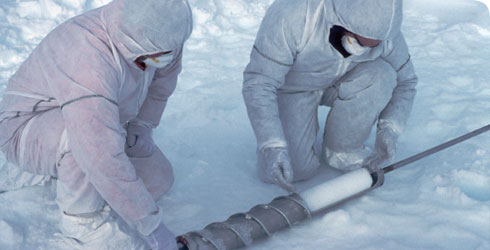How do we know?
Weather stations around the world measure daily temperatures and weather conditions, but to understand whether these temperatures are unusual and significant we also need to know about the Earth's past climate. This helps us understand the influence humans are having on the climate of today.
Clues to past temperature can be found in lots of different places, such as the rocks, the ice and the fossil remains of marine creatures. Scientists at the Museum use many of these methods to find out how Earth's climate has changed, and how it is changing now.
-

Ice cores
Discover what ice cores from Antarctica can tell us about Earth's past temperature, carbon dioxide levels and the relationship between the two.
-

Changing species distribution
What can the changes in the woolly mammoth population in the last period of global warming tell us about the future of species in Britain today?
-

Bryozoans
Find out how fossil bryozoans under the north Atlantic ocean can reveal the secrets of Earth's changing climate through history.
-

Sediment cores
Explore how the study of midges in samples, or cores, taken from the bottom of lakes can be used to measure Earth's temperature.
-

The geological record
Find out what different types of rock and mineral deposits can tell us about Earth's past climate.

